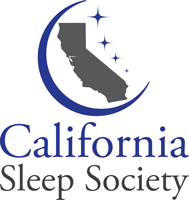By: Sam A. Kashani, MD
Sleep disorders and Attention-Deficit/Hyperactivity Disorder (ADHD) share a complex and bidirectional relationship that affects millions worldwide. Research increasingly suggests these conditions don’t merely coexist but actively influence and exacerbate each other, creating challenges for diagnosis, treatment, and daily functioning. Both conditions involve dysregulation of similar neurotransmitter systems. The brain regions responsible for attention and arousal also regulate sleep-wake cycles. Dopamine and norepinephrine—key neurotransmitters affected in ADHD—also play crucial roles in sleep regulation.
Up to 73% of children and 80% of adults with ADHD experience sleep problems—significantly higher than the general population. Common sleep disorders in people with ADHD include Delayed Sleep-Wake Phase Disorder, sleep-onset insomnia, Restless Legs Syndrome (RLS), sleep apnea, and chronic sleep insufficiency.
The symptom overlap creates significant diagnostic confusion. Sleep deprivation can mimic ADHD symptoms, including impaired attention, hyperactivity (particularly in children), impulsivity, executive function difficulties, and emotional dysregulation. This overlap sometimes leads to misdiagnosis, with some patients receiving ADHD treatment when a sleep disorder is the primary issue, or vice versa.
ADHD stimulant medications can further complicate the relationship. While they improve core ADHD symptoms, they may also delay sleep onset, reduce sleep quality, and shorten overall sleep duration. This creates a paradoxical situation where treatment for one condition potentially worsens the other. Interestingly, this relationship becomes even more nuanced when considering that some of these same stimulant medications are specifically prescribed for the treatment of sleep disorders characterized by clinical hypersomnolence. Medications like modafinil, solriamfetol, methylphenidate, and amphetamine-based stimulants are standard treatments for conditions such as narcolepsy, idiopathic hypersomnia, and sleep apnea with residual daytime sleepiness. In these cases, the wake-promoting properties that can disrupt sleep in ADHD patients become therapeutic for those experiencing pathological daytime sleepiness. This dual role of stimulants highlights the complex interplay between attention regulation and sleep-wake cycles, and emphasizes the importance of precise diagnosis and personalized treatment approaches. For patients with both ADHD and a hypersomnolence disorder, medication management requires particularly careful titration and monitoring to balance the therapeutic effects across both conditions.
Current best practices suggest addressing both conditions simultaneously through various measures. These may include behavioral interventions such as cognitive-behavioral therapy for both sleep and ADHD, which have shown significant effectiveness. Medication timing adjustments, such as administering stimulants earlier to minimize sleep disruption, or strategically-timed Melatonin for improving sleep-onset in the setting of delayed sleep-wake circadian phase. And as is the case with managing most sleep disorders, treating any/all specific primary sleep issues that may be contributing to “broken sleep” in an effort to “glue the broken pieces of sleep back together”.
The combination of sleep disorders and ADHD creates significant functional impairment. Individuals may experience worsened cognitive performance, increased emotional reactivity, reduced quality of life, and increased stress in relationships and work environments.
Research increasingly focuses on this interconnection. Emerging approaches include chronotherapy (timed light exposure), advanced screening protocols to identify both conditions early, novel medications that address symptoms without exacerbating sleep issues, and digital interventions to monitor and improve both sleep and attention.
Understanding the complex relationship between sleep disorders and ADHD remains crucial for effective treatment. By addressing both conditions simultaneously, healthcare providers can significantly improve outcomes and quality of life for affected individuals.
